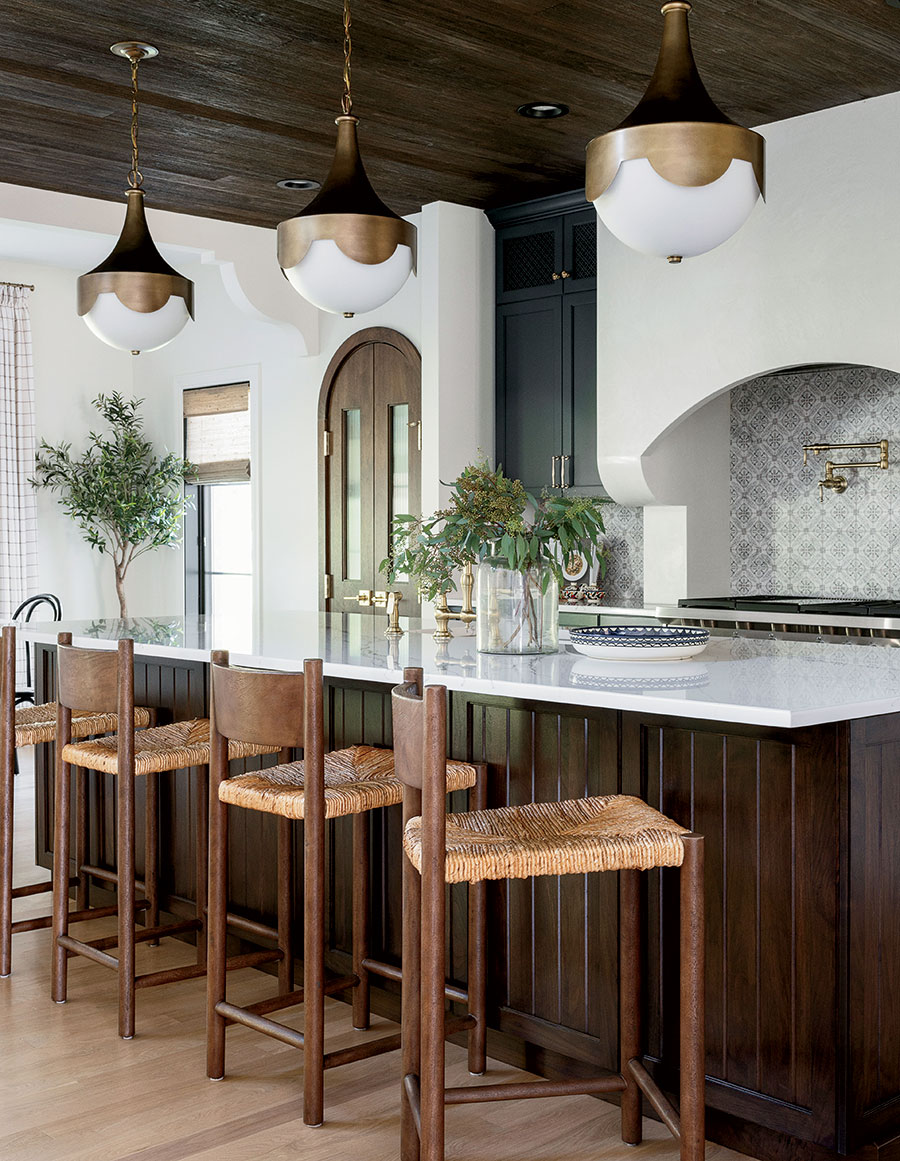When an Orland Park couple began mapping out their new dream home, they didn’t start with the vision of an ideal kitchen or a Pinterest board of paint swatches. They began with a shower. Specifically, a shower lined in green onyx, a rare natural stone found in Pakistan and India and often used in traditional Palestinian interiors.
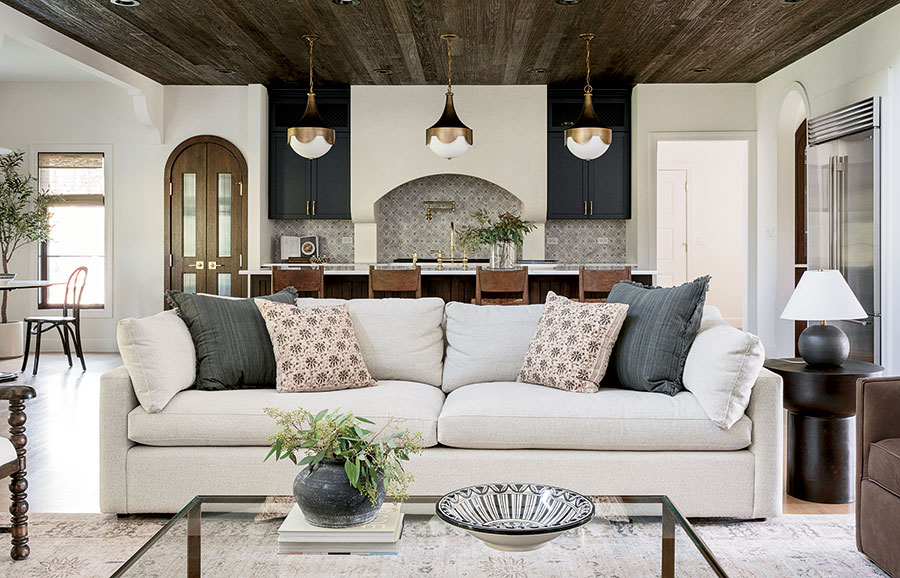
“Much of Palestinian design overlaps with Spanish and Mediterranean traditions. The stone, patterns, and rich tones felt familiar.”
They turned to Shalmai Keim, owner of Shalmai Interior Design Studio in Goshen, Indiana, because they knew she had pulled off the challenging material in a previous project. “Green onyx is notoriously tricky,” Keim says. “Each slab has unpredictable rust veining, and no two are alike. Most designers won’t touch it.”
What began as a conversation about a single bathroom quickly expanded into a full-home commission, with one clear directive: Weave the owners’ Palestinian heritage into a modern framework. The solution came in a rich mix of arched doorways, earthy tile, dark walnut woodwork, and ornate light fixtuers: details that would make the home feel both contemporary and deeply rooted.
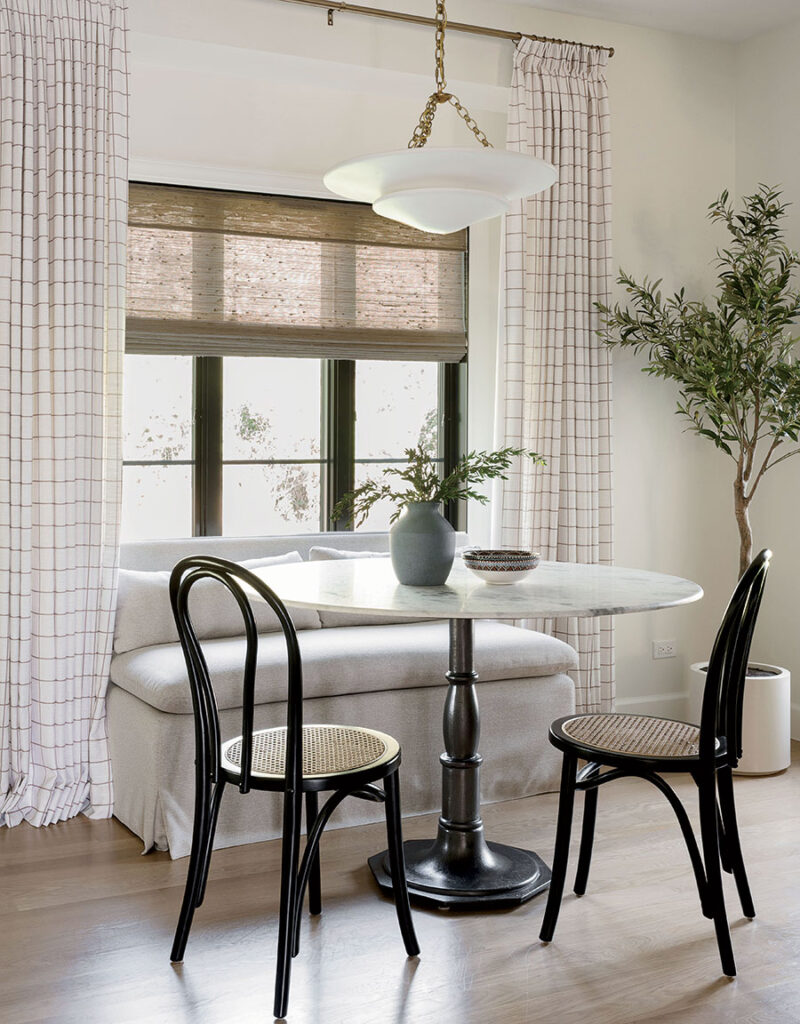
“It was a collaborative and intuitive process,” Keim says. She created a mood board for every room of the home, learning what to avoid (“absolutely no farmhouse,” the homeowners insisted) and what to lean into: vibrant colors, intricate patterns, and a sense of place. The prayer room glows in a calming green; authentic Palestinian pottery adorns a massive walnut built-in; and the family room ceiling is clad in dark-stained beams, a warm nod to Mediterranean style. “Much of Palestinian design overlaps with Spanish and Mediterranean traditions,” says Keim, who is of Puerto Rican ancestry. “The stone, the patterns, the rich tones — it all felt familiar.”
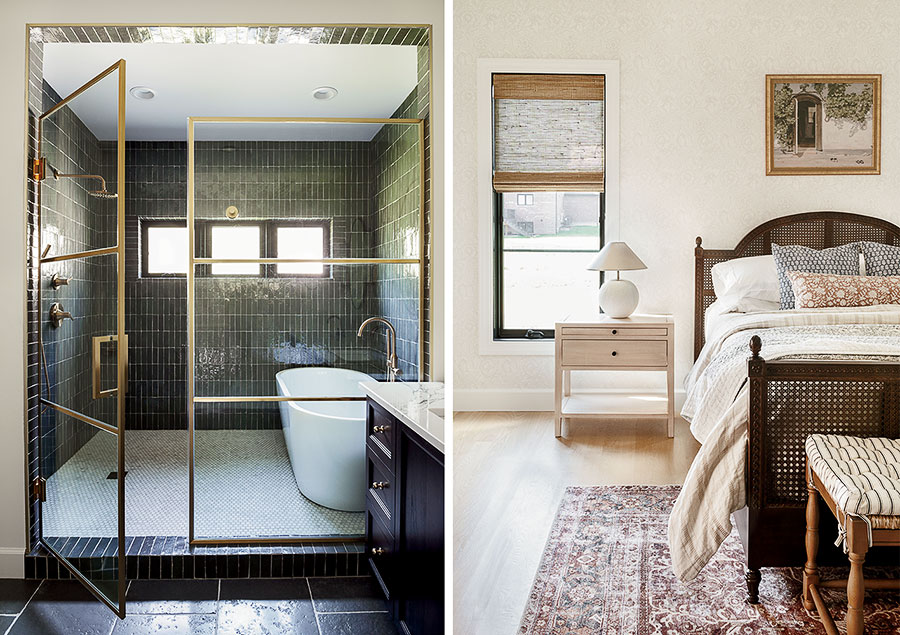
Cultural traditions also shaped the layout. In Palestinian homes, guests tend to gather in the front sitting area or formal dining room, not in the kitchen or family spaces. Keim marked the threshold with an arched opening inspired by the lattice patterns of an Arab mashrabiya, a subtle architectural cue that signals transition.
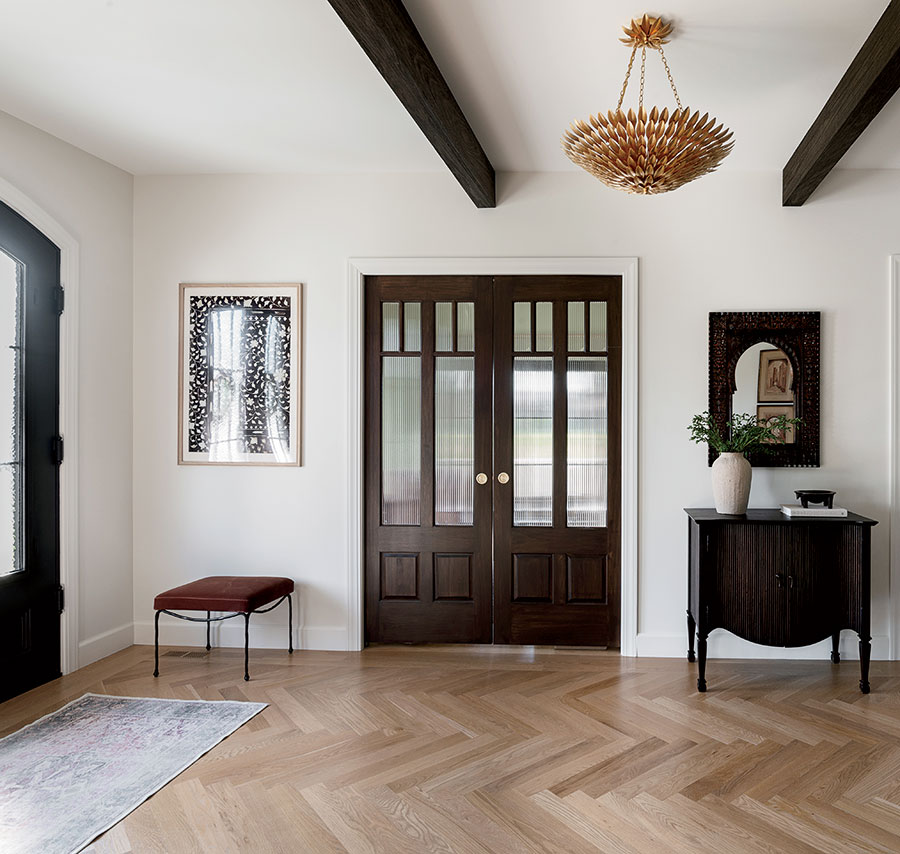
Practicality played a role, too. On the patio and back deck, draped fabric across arbor ceilings provides privacy, allowing the wife to enjoy the outdoors without always wearing her hijab. The result bridges continents and centuries, proving that cultural memory can live easily within a modern floor plan.



